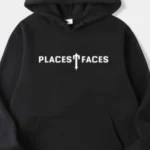Biodegradable has become a buzz these days. Although there are a variety of packaging materials that claim to decompose easily, they still generate enormous waste. It would be a surprise to know that a large percentage of it comes from our consumption activities. It is the reason that researchers keep on experimenting with innovative ideas to create ‘zero waste’ and support a healthy environment. Edible packaging is an entirely new concept. It has gained much acceptance over the last few decades. Using packaging that is not only biodegradable but also edible brings a lot of nutritional importance. It provides a broad platform for businesses to attract hundreds of more eco-conscious consumers and do something to save our planet.
Food packaging has become more important to Manufacturers:
Over time, food packaging is becoming more important to manufacturers. From biodegradable food boxes to BPA-free packaging, the companies are finding different improvements to create an exceptional packaging design. Food packaging is important for several reasons. It helps your brand to advertise; keeps the food safe from contamination, and prevents spoilage. Most of the food packaging used these days is petroleum-based plastics. They are not recyclable, biodegradable, or eco-friendly, proving one of the biggest threats to our planet. Due to rising environmental concerns, creating packaging that is beneficial for the environment has become more important for the manufacturers than ever. Edible packaging is making a good contribution in this regard.
What is Edible Packaging?
Edibles packaging refers to a type of packaging that is created to be eaten or can biodegrade efficiently, same as the food inside. Soon after the use of cannabis edible packaging, the companies have started searching for innovative solutions to reduce overall waste. Such type of packaging comes in various forms and has been constantly improved over time to be used for different substances as edible packaging is usually made from thin layers of material that can itself be eaten, so it is mostly used for food products. The film or coating becomes an integral part of the food preventing it from spoilage and contamination. In addition to it, edible packaging offers a series of benefits to businesses as well as consumers. It increases the shelf life of food products by protecting them from physical, chemical, or biological damage. Moreover, edible packaging is the most successful way to overcome food waste pollution. Plastic and other dangerous substances do not only spoil the quality of your food items but also end up in landfills taking centuries to decompose. Thus the use of some effective alternative like edible packaging is now required more than ever.
Why Edible Packaging is used Mostly for Food?
The main purpose of food packaging is to preserve the quality and assure the safety of food. It should be able to keep the product quality the same as it was at the time of manufacturing. Polyethylene and other forms of plastics are the most common packaging options used by the food industry for over 50 years. Although the material is inexpensive and flexible to use, it generates heaps of waste that ends in landfills or water bodies. It is one of the biggest sources of pollution worldwide. These typical plastics are derived from petroleum. They are not recyclable or biodegradable and are perceived as environmentally catastrophic waste. Most of these polymers are so harsh to cause a severe environmental threat. A good solution to solve this dilemma is the use of edible food packaging. It addresses your environmental issues, preserves the quality of food, and positively impacts its distribution.
Examples of Edible Packaging:
There is a variety of edible food packaging that companies are using for their specific types of food. The most common example is of ice cream cone. It consists of a waffle of a sugar-based cone that contains the ice cream inside. Considering this example, the fast-food chains have tried making a coffee cup out of a hard cookie, lined with a thin chocolate layer to resist heat. In this way, the cup can be eaten after the coffee is consumed or even if it is thrown away it decomposes very quickly as compared to Styrofoam or plastic.
Another form of the edible cup available in the market is gelatin-type packaging. It is made of Loliware and comes in different flavors like cherry and vanilla etc. Candy wrappers made from rice paper and starch cupcake wrappers made from potato fibers are other good examples of edible packaging used these days.
A new form of edible packaging used by various companies is made from milk proteins. It is used as casein around food products. The casein film is much better than plastic as it keeps the food fresh by exposing it less to oxygen. It does not contain starch which means that it is less porous and proves more effective in oxygen blocking. Casein looks similar to plastic. As it is made from milk so does not have much taste; therefore flavors can be added in the future. To enhance its durability some manufacturers also add citrus pectin. This substance makes it strong enough to bear higher temperatures and humidity. Recently, a company named Wikifoods developed a fruit-like casing to surrounds the food items. It can easily be broken or open like the skin of a fruit. This company also paired with Stonyfield Yogurt to create yogurt filled balls replacing the traditional plastic yogurt containers. These balls are made out of fruit skin like that of an apple, containing either yogurt or ice cream. There are a few other innovative inventions as well that are not available in the market. These include sea weed edible packaging, caramel sugar containers and beeswax containers.




